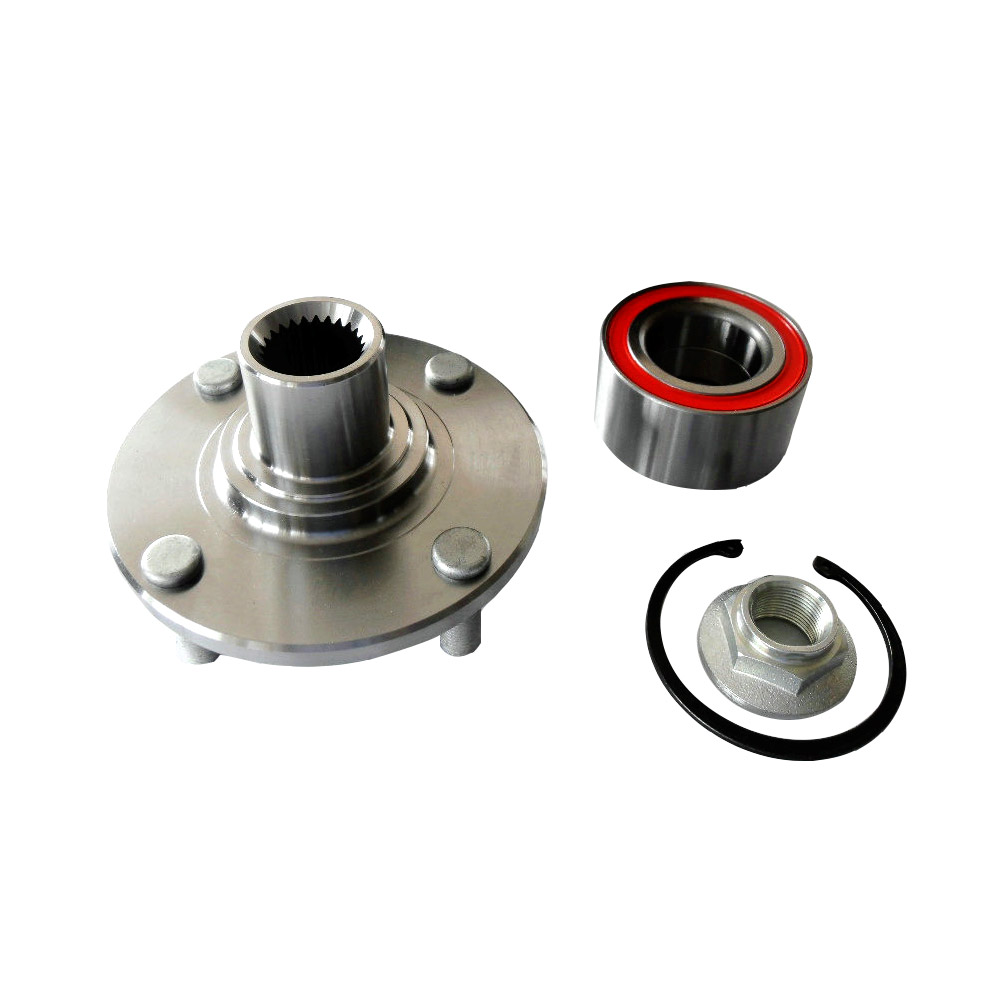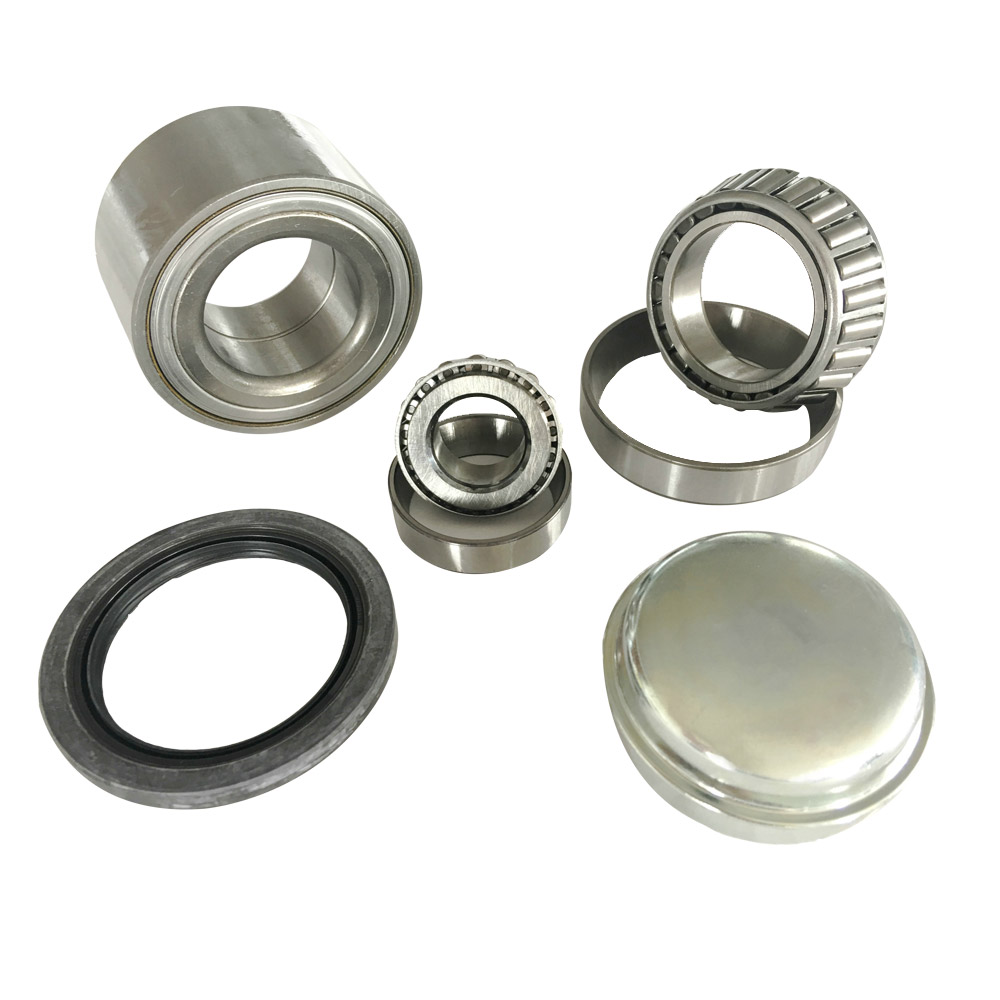A wheel hub spindle kit is a critical component in a vehicle’s suspension and wheel assembly, responsible for maintaining wheel alignment, supporting the weight of the vehicle, and enabling smooth rotation of the wheels. It typically includes the wheel hub, spindle, bearings, and sometimes associated hardware such as bolts and seals. Over time, wear and tear can compromise the performance of these components, leading to safety hazards, reduced handling performance, and potential damage to other parts of the vehicle.
Understanding the signs that indicate a wheel hub spindle kit needs replacement is essential for vehicle safety, comfort, and long-term maintenance. This article explores common symptoms, diagnostic methods, causes of wear, maintenance tips, and best practices for replacement.
1. Understanding the Wheel Hub Spindle Kit
The wheel hub spindle kit is a complex assembly that serves as the mounting point for the wheel and houses the wheel bearing. Its primary functions include:
- Supporting the Vehicle’s Weight: The spindle and hub transfer weight from the suspension system to the wheel.
- Allowing Wheel Rotation: The integrated bearings reduce friction and enable smooth rotation of the wheels.
- Maintaining Alignment: Properly functioning spindles ensure the wheel stays aligned with the suspension geometry.
- Facilitating Brake Function: The hub often serves as a mounting point for brake rotors and drums, ensuring reliable braking performance.
Failure in any part of the hub or spindle assembly can compromise vehicle safety, reduce performance, and lead to more costly repairs.
2. Common Signs of a Failing Wheel Hub Spindle Kit
Several symptoms indicate that the wheel hub spindle kit may need replacement. These signs are often noticeable during driving and routine inspections:
2.1 Unusual Noise While Driving
- Grinding or Rumbling Sounds: Worn wheel bearings within the hub can produce a grinding, humming, or rumbling noise that changes with vehicle speed.
- Clicking or Popping Noises: Damaged spindle components or loose bolts may generate clicking or popping sounds, especially during turns.
Diagnostic Tip: Listen for noises during straight driving and while making gradual turns. The noise often intensifies with acceleration or changes in wheel load.
2.2 Wheel Play or Vibration
- Excessive Wheel Play: If the wheel can move or wobble when rocked side-to-side or front-to-back while lifted, the hub or spindle may be loose or worn.
- Steering Wheel Vibration: Damaged bearings or a worn spindle can cause vibrations felt through the steering wheel, especially at higher speeds.
Diagnostic Tip: A mechanic may perform a wheel shake test by lifting the vehicle and manually checking for movement in the hub and spindle assembly.
2.3 Uneven Tire Wear
- A compromised wheel hub spindle can cause misalignment, leading to uneven or accelerated tire wear.
- Often, tires may show wear on one edge more than the other or exhibit cupping patterns due to vibration from worn components.
Diagnostic Tip: Regular tire inspections can detect unusual wear patterns, prompting a check of the hub and spindle assembly.
2.4 ABS or Warning Lights
- Many modern vehicles integrate wheel speed sensors into the hub assembly.
- A failing wheel hub spindle kit may trigger ABS warning lights, traction control alerts, or stability system warnings.
- Sensor misalignment or bearing failure can interfere with proper electronic readings.
Diagnostic Tip: Use a diagnostic scanner to read fault codes, which may indicate ABS or wheel speed sensor issues related to the hub assembly.
2.5 Reduced Handling Performance
- Pulling to One Side: A damaged hub or spindle can affect wheel alignment, causing the vehicle to pull to one side while driving straight.
- Loose or Unresponsive Steering: Worn bearings or spindle components may reduce steering precision, making the vehicle feel less stable.
- Noise During Braking: Since the hub connects to brake rotors, a failing hub may cause pulsating or scraping sounds during braking.
Diagnostic Tip: Test drive the vehicle at various speeds and braking conditions to detect subtle handling changes.

2.6 Visible Damage or Corrosion
- Inspecting the hub and spindle may reveal rust, cracks, or corrosion on the spindle surface, bolts, or bearing housing.
- Seals may be leaking grease, indicating bearing failure.
Diagnostic Tip: Visual inspections during routine maintenance can identify early signs of wear before catastrophic failure occurs.
3. Causes of Wheel Hub Spindle Kit Wear
Understanding why hub and spindle kits fail helps prevent premature replacement. Common causes include:
3.1 Normal Wear and Tear
- Wheel bearings inside the hub naturally wear out over time due to friction and vehicle load.
- High mileage vehicles often require replacement of the hub and spindle assembly after 70,000–150,000 miles, depending on driving conditions.
3.2 Exposure to Environmental Elements
- Water, road salt, and debris can cause corrosion on the spindle and hub.
- Rust weakens structural integrity and accelerates bearing failure.
3.3 Improper Installation
- Loose bolts, misaligned bearings, or inadequate torque during installation can reduce lifespan.
- Over-tightening or under-tightening may cause premature wear or failure.
3.4 Impact or Accidents
- Hitting potholes, curbs, or involvement in collisions can bend the spindle or damage the hub assembly.
- Even minor impacts can cause misalignment, leading to vibration and uneven tire wear.
3.5 Overloading the Vehicle
- Carrying weight beyond the vehicle’s recommended capacity increases stress on the hub and spindle, accelerating wear and bearing failure.
4. Maintenance and Inspection Tips
Regular maintenance can help detect problems early, extending the lifespan of the wheel hub spindle kit:
- Regular Visual Inspections: Check for cracks, rust, and damaged seals.
- Grease and Lubrication Checks: Ensure wheel bearings are properly lubricated, especially in older vehicles with serviceable hubs.
- Listen for Unusual Noises: Grinding, humming, or clicking noises indicate bearing wear.
- Monitor Handling and Steering: Sudden vibration, pulling, or steering looseness may indicate hub or spindle issues.
- Periodic Professional Inspection: Mechanics can check wheel alignment, bearing play, and ABS sensor integrity.
Early detection prevents safety hazards and costly repairs to tires, brakes, or suspension components.
5. Replacement Considerations
When signs of wear or failure are detected, timely replacement of the wheel hub spindle kit is crucial. Key considerations include:
- OEM vs. Aftermarket: OEM kits provide original manufacturer specifications, while quality aftermarket kits may offer cost savings and comparable performance.
- Quality of Bearings and Seals: High-quality bearings ensure smooth rotation, while robust seals prevent contamination and extend service life.
- Compatibility: Ensure the kit matches your vehicle make, model, and year to avoid installation issues.
- Professional Installation: Correct installation with proper torque and alignment is essential for longevity and safety.
6. Consequences of Ignoring Replacement
Failing to replace a worn or damaged wheel hub spindle kit can lead to:
- Complete Bearing Failure: Resulting in wheel seizure or detachment in extreme cases.
- Brake System Issues: Uneven rotor wear, reduced braking efficiency, or brake noise.
- Suspension Damage: Misalignment affects control arms, shocks, and tires.
- Safety Hazards: Loss of vehicle control, especially at high speeds or during cornering.
Prompt replacement ensures vehicle safety, performance, and reliability.
7. Conclusion
The wheel hub spindle kit is a vital component in maintaining vehicle safety, handling, and performance. Recognizing the signs that indicate replacement is necessary—such as unusual noises, vibration, uneven tire wear, warning lights, reduced handling, and visible damage—can prevent further damage and reduce the risk of accidents.
Regular inspections, proper maintenance, and timely replacement with high-quality kits ensure that the wheel hub spindle assembly continues to perform effectively, providing smooth wheel rotation, stable alignment, and reliable braking. Ignoring early warning signs can lead to costly repairs, compromised safety, and increased risk of accidents, making vigilance and proactive care essential for all vehicle owners.
By staying attentive to these signs and following best practices for maintenance and replacement, drivers can extend the lifespan of their wheel hub spindle kits, enhance vehicle performance, and maintain safety on the road.






